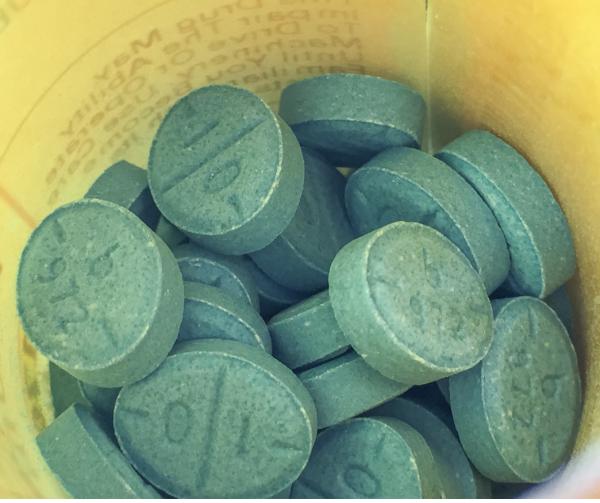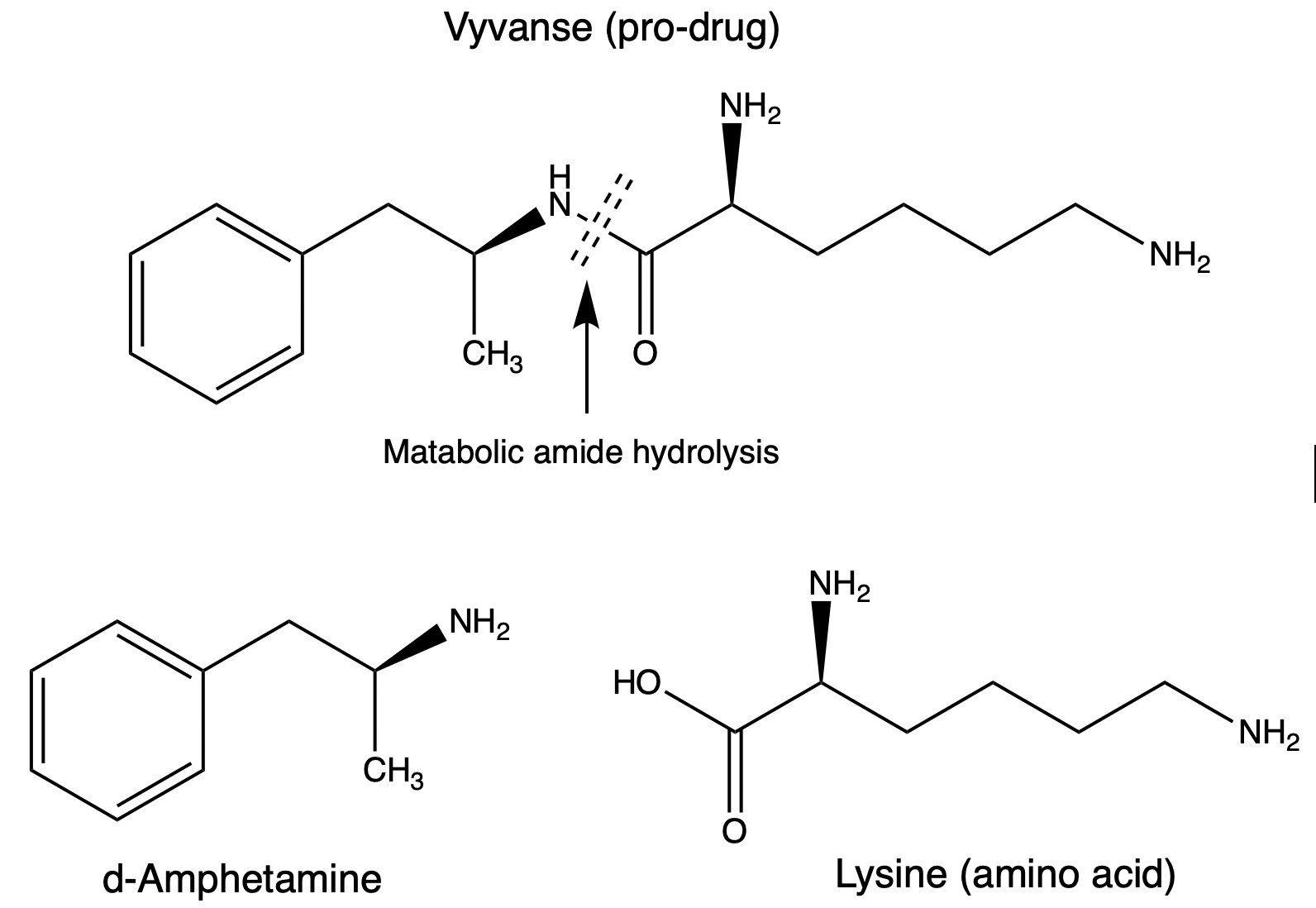
The current Adderall shortage has caused significant hardship for people suffering from Attention-deficit/hyperactivity disorder (ADHD). Since ADHD is most prevalent in children and teens, the shortage of the drug – one of the two most commonly used to treat ADHD – is having an impact on the mental health and education of kids. (My colleague Dr. Chuck Dinerstein recently weighed in on this topic. See: ACSH Asks Where’s The Adderall?)
Parents scrambling to find substitutes will run into dozens of different brands of ADHD drugs, however, most of them consist of duplicate forms of two drugs: amphetamine (e.g., Adderall) and methylphenidate (Ritalin). Since the amphetamine class is much more confusing, I will confine the discussion of this article to these.
There are different forms of amphetamine and this makes a difference. But only a little.
Much of the confusion surrounding the amphetamines can be "blamed" on the molecule itself. There are actually two drugs that can be correctly named "amphetamine." These are shown in Figure 1.

Figure 1. (Left) The chemical structures of d-amphetamine (dextroamphetamine) and l-amphetamine (levoamphetamine). (Right) A display of the two compounds as mirror images.
(If you have any ADHD meds on hand, you might want to take them now because we're going to discuss enantiomers, a topic that has sent countless pre-med organic chemistry students to podiatry school.)
Although the two molecules may look alike, they are not identical. They differ by the arrangement of the groups attached to the carbon atom with the red asterisk, making the asymmetrical. The classic example used to explain this concept is your hands. They may look the same, but it is impossible to perfectly superimpose one on the other – the definition of identical. Likewise, amphetamine can exist in two mirror-image forms called enantiomers, which exist in a 50-50 mixture called a racemate aka a racemic mixture. (For a detailed discussion of enantiomers, see Carvone: One Molecule, Two Different Scents, And Flavors.)
Although enantiomers are chemically identical (same boiling or melting point, solubility, etc.), each one will act differently in the body. In the case of amphetamine, the two forms are distinguished by d- (dextroamphetamine) and l- (levoamphetamine).
In the vast majority of cases, a racemic mixture (composed of both enantiomers) will consist of one active enantiomer and the other will be inactive, just carried along for the ride (1). However, this is not the case with amphetamine; although the d-enantiomer is the active form, the l-form also has somewhat different (and weaker) stimulatory properties. Perhaps stranger is a 2008 paper that claims that in mouse models, "l-amphetamine improves poor sustained attention while d-amphetamine reduces overactivity and impulsiveness as well as improves sustained attention," raising the possibility that two can act in a complimentary fashion.
Amphetamine drugs: All the different players.
The following are the most commonly used amphetamine drugs. With the exception of one (Vyvanse), they are quite similar, but not the same.
- Adderall is the most used amphetamine. It has a crazy composition, but it makes sense. Sort of. The pill's composition is 75% d-amphetamine and 25% l-amphetamine, the only drug that uses both enantiomers. It comes in immediate release (IR) and extended release (XR) formulations containing a variety of salts (2).
- Dexadrine is similar to Adderall, but contains only d-amphetamine (sulfate salt) and no l-amphetamine.
- Desoxyn is identical to Evekeo, except it is a hydrochloride salt rather than a sulfate salt.
- Zenzidi is identical to Dexadrine, differing only by formulation. And it's a brand name, not a generic.
- Vyvanse (lisdexamfetamine) is very different from the others. It is a pro-drug of d-amphetamine. In other words, Vyvanse itself has no amphetamine-like properties. Instead, it is absorbed into the blood, where peptidase enzymes contained in red blood cells degrade it (Figure 2).
- Evekeo is the racemic version of methamphetamine sulfate salt (1:1 mixture of the d- and l- forms). Methamphetamine is a much stronger stimulant than amphetamine.

(Fig. 2) Vyvanse is an inactive pro-drug of d-amphetamine covalently bound to the amine acid lysine. It is well-absorbed and then slowly is broken down by enzymes to convert it into d-amphetamine. The use of pro-drugs is a well-known method used to attain a slow, steady release or increase blood levels of a drug.
Bottom line
All amphetamine-containing drugs are very similar, differing only by:
- Racemic drug vs. pure single enantiomers of amphetamine
- Mixtures of d- and l-amphetamine
- The use of different salt forms (e.g., sulfate, hydrochloride...). These can affect the rate of absorption.
- One pro-drug.
- One methamphetamine
Finally, it should be noted that of the six amphetamine drugs listed above, any of them should be a reasonable (although not identical) substitute for the others. This is the good news. The bad news is that we are in this situation at all. Who is to blame? Manufacturers run into technical troubles from time to time, which is exacerbated by a small number of companies (sometimes one) that make the drug. This isn't great, but it has happened many times before and will happen again.
But, perhaps most galling is that the DEA has a hand in determining how much amphetamine can be manufactured each year, and the agency will cheerfully cause a shortage rather than let a single extra pill be made. Seem familiar? It should.
The DEA, in its infinite wisdom, has managed to turn a few thousand annual prescription opioid deaths into 100,000 illicit fentanyl deaths in a decade while at the same time persecuting pain management physicians and torturing pain patients who rely upon but can no longer get, the medications required to keep them alive and functioning.
Do you see a pattern here? I sure do. The DEA needs to get the hell out of medicine and concentrate on catching smugglers of illegal drugs. Period. Journalist Maia Szalavitz, one of the few writers who actually get it, published a recent opinion piece in the New York Times. As usual, she nails it:
"The DEA has had five decades to prove that it can do better than the FDA in controlling potentially dangerous drugs used in medicine. It has failed.”
NOTES:
(1) Decades ago racemic drugs were common. But there are now reliable methods for separating the enantiomers, so the DEA will require that the single enantiomer drug be made. This is scientifically valid. While the inactive enantiomer may be "carried along for the ride," it may have its own toxicity issues. At the very least, the pill will contain twice the dose when racemate drugs are used.
(2) Depending on the binding assay being conducted, the d-form is about 2-7 times more potent than the l-form.



